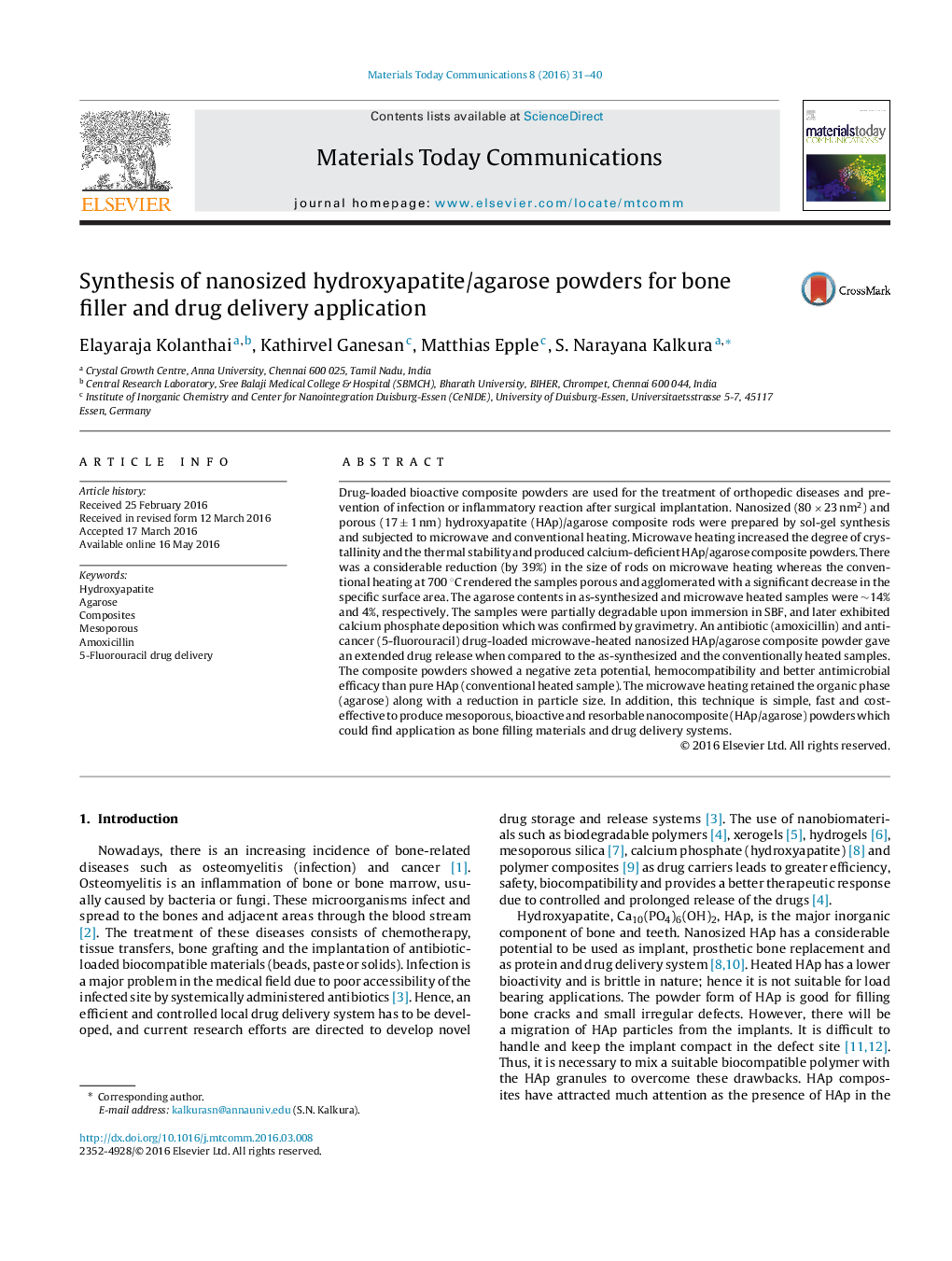| کد مقاله | کد نشریه | سال انتشار | مقاله انگلیسی | نسخه تمام متن |
|---|---|---|---|---|
| 1586170 | 1515063 | 2016 | 10 صفحه PDF | دانلود رایگان |
• Calcium-deficient HAp/agarose powder with reduced crystallite size (∼ 40%) was produced by microwave heating.
• Microwave heating retain the organic agarose phase in the composite compared to conventional heating.
• Controlled drug release was observed from microwave sintered composites.
• Negative zeta potential may enhance cell attachment and proliferation.
• HAp/agarose composite powder could be used as bone filler and for drug delivery applications.
Drug-loaded bioactive composite powders are used for the treatment of orthopedic diseases and prevention of infection or inflammatory reaction after surgical implantation. Nanosized (80 × 23 nm2) and porous (17 ± 1 nm) hydroxyapatite (HAp)/agarose composite rods were prepared by sol-gel synthesis and subjected to microwave and conventional heating. Microwave heating increased the degree of crystallinity and the thermal stability and produced calcium-deficient HAp/agarose composite powders. There was a considerable reduction (by 39%) in the size of rods on microwave heating whereas the conventional heating at 700 °C rendered the samples porous and agglomerated with a significant decrease in the specific surface area. The agarose contents in as-synthesized and microwave heated samples were ∼14% and 4%, respectively. The samples were partially degradable upon immersion in SBF, and later exhibited calcium phosphate deposition which was confirmed by gravimetry. An antibiotic (amoxicillin) and anticancer (5-fluorouracil) drug-loaded microwave-heated nanosized HAp/agarose composite powder gave an extended drug release when compared to the as-synthesized and the conventionally heated samples. The composite powders showed a negative zeta potential, hemocompatibility and better antimicrobial efficacy than pure HAp (conventional heated sample). The microwave heating retained the organic phase (agarose) along with a reduction in particle size. In addition, this technique is simple, fast and cost-effective to produce mesoporous, bioactive and resorbable nanocomposite (HAp/agarose) powders which could find application as bone filling materials and drug delivery systems.
Figure optionsDownload as PowerPoint slide
Journal: Materials Today Communications - Volume 8, September 2016, Pages 31–40
